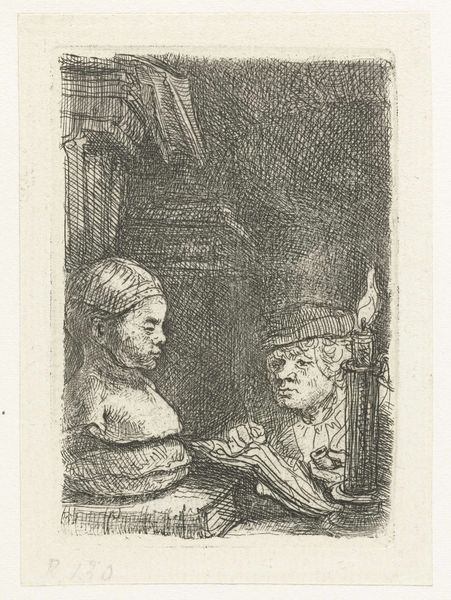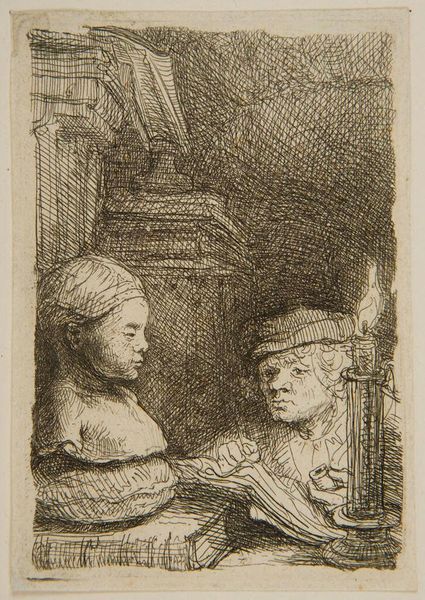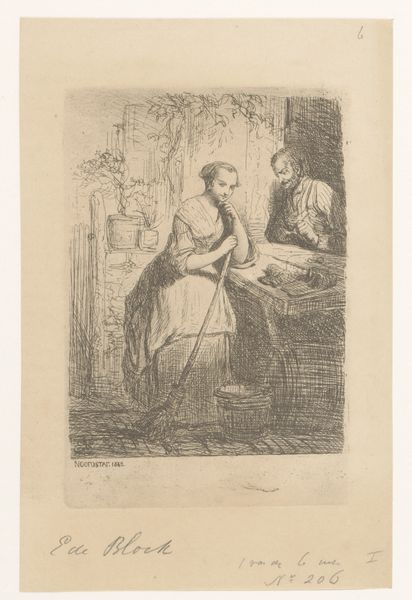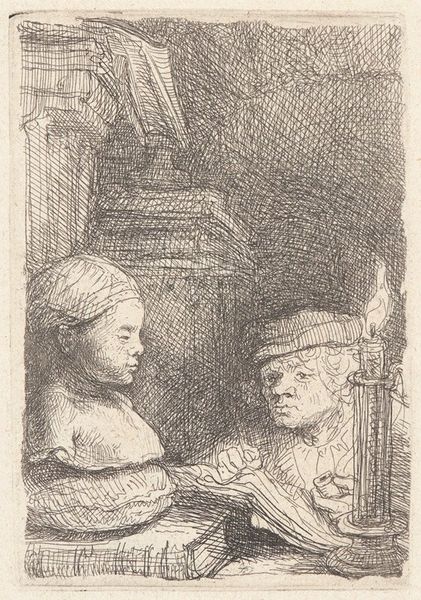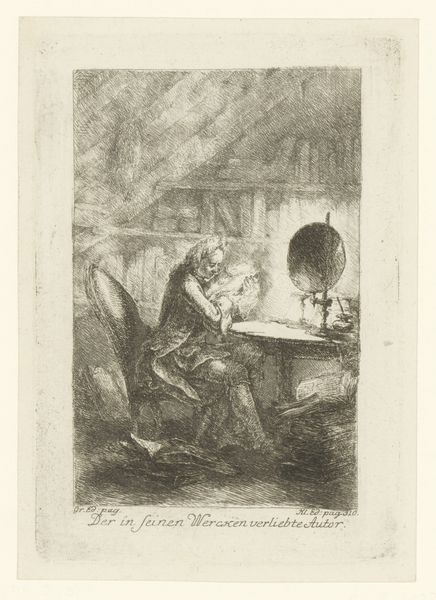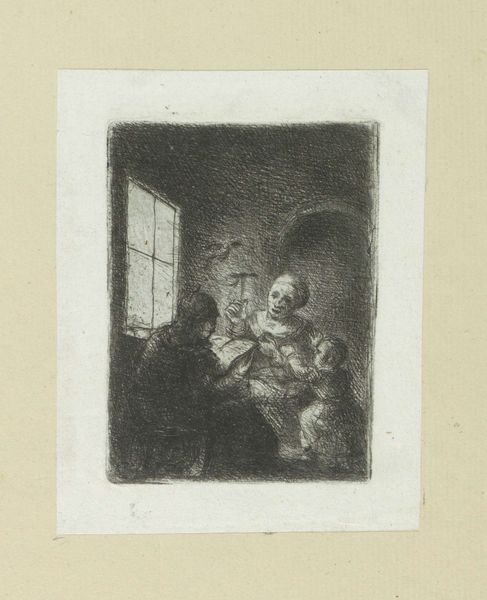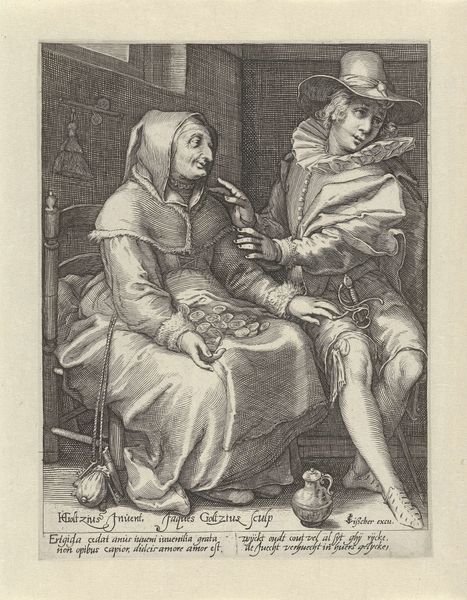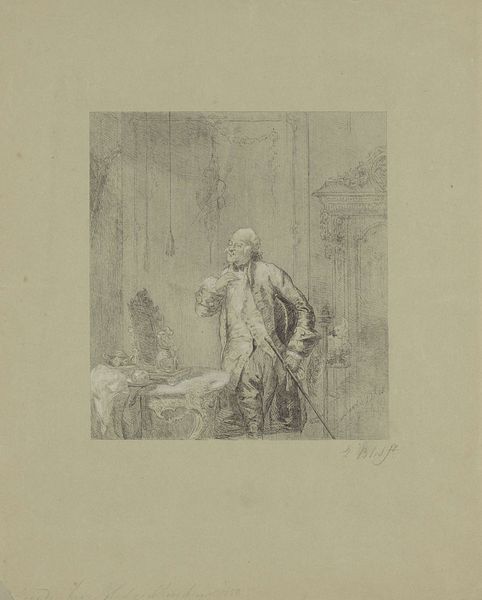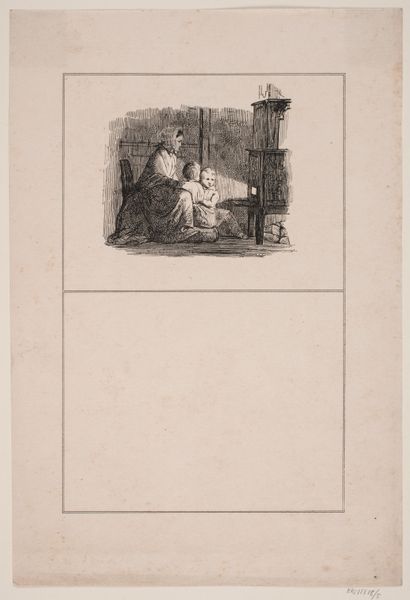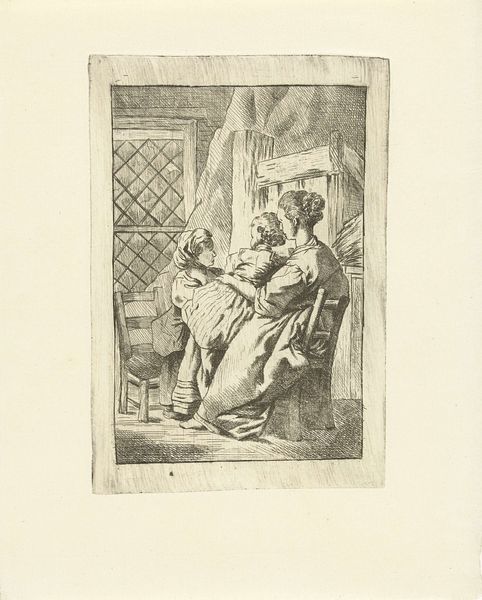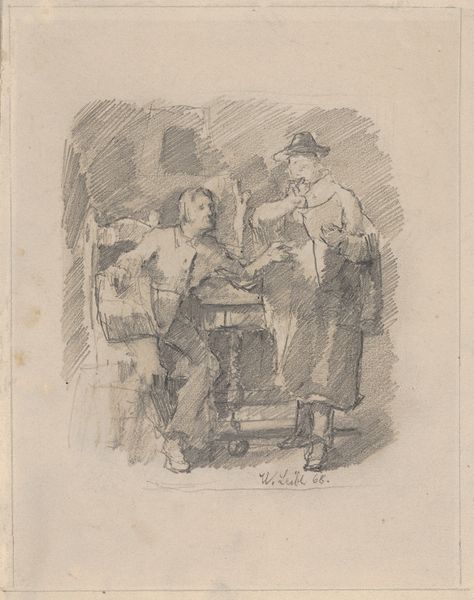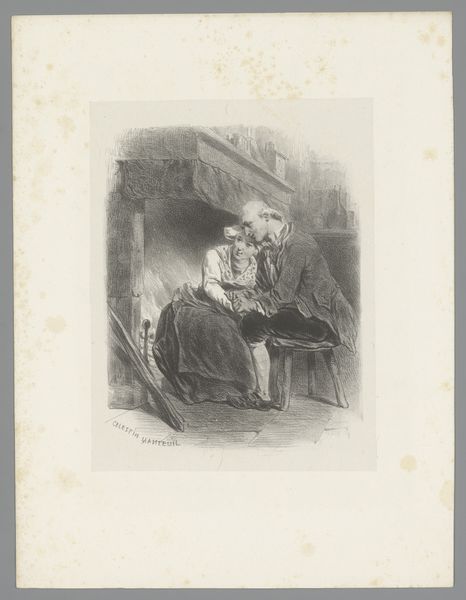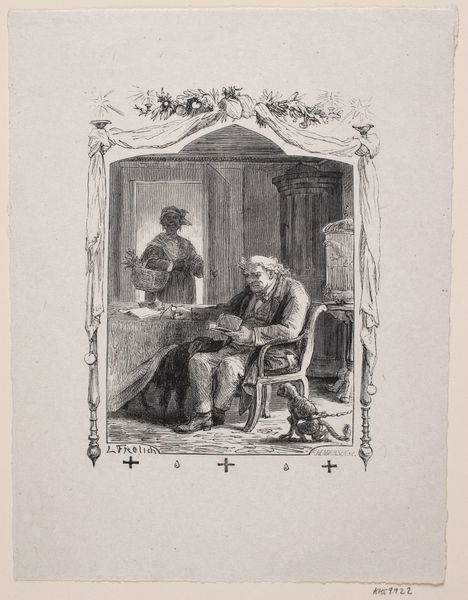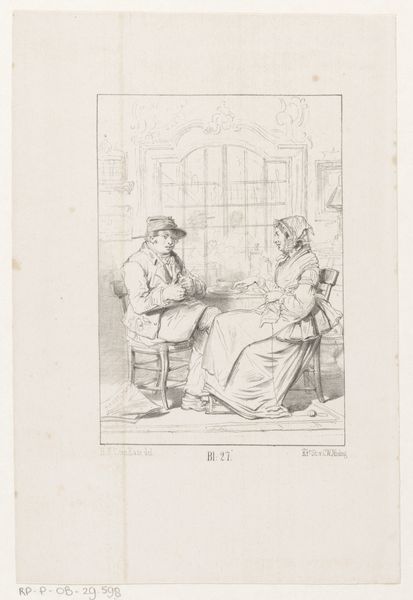
drawing, etching, pencil
#
pencil drawn
#
drawing
#
baroque
#
etching
#
pencil
Dimensions: height 94 mm, width 64 mm
Copyright: Rijks Museum: Open Domain
Editor: So, here's "Man, Drawing from a Cast," possibly by Rembrandt van Rijn, made sometime between 1639 and 1808, and currently at the Rijksmuseum. It appears to be an etching, perhaps with pencil work as well. I’m immediately struck by how the candle illuminates the artist and the sculpture, contrasting with the shadowy background. How would you interpret this piece? Curator: It's fascinating to consider this work through a materialist lens. Notice the labor involved—the manual skill of the etcher, the cost and availability of materials like the etching plate and paper. Also, the choice of subject. Why a plaster cast? How does that relate to the consumption and understanding of classical art in Rembrandt’s time? Editor: That’s a great point. I was so focused on the artistry itself, I didn’t think about the plaster cast as a manufactured object in its own right, mediating classical ideals through material production. The candlelight also makes me think of workshops and their environment. Curator: Exactly! Think about the social context: artists working in studios, learning through copying, the market for these images. Was this primarily intended for other artists to study, or for a broader audience interested in art and antiquity? The print medium allows for wider dissemination. Also consider that Rembrandt wasn’s always regarded a success. There is toil and social-historical dimensions. Editor: So, instead of just seeing a simple image of an artist, we're seeing a snapshot of the entire art world and its material conditions at the time? Curator: Precisely! And how those conditions shaped both the creation and reception of art. This print becomes a document of labor, consumption, and artistic training within a specific economic and social structure. What have you gleaned about the means of production? Editor: Thinking about the materials and labor involved gives me a much deeper appreciation for not just the artwork itself, but also for the circumstances surrounding its creation and consumption. I see how art is enmeshed with socio-historical structures and that we must engage with its complex web. Curator: Precisely! Understanding art within a materialist framework invites us to look beyond the surface and consider the tangible realities that shaped it.
Comments
No comments
Be the first to comment and join the conversation on the ultimate creative platform.
